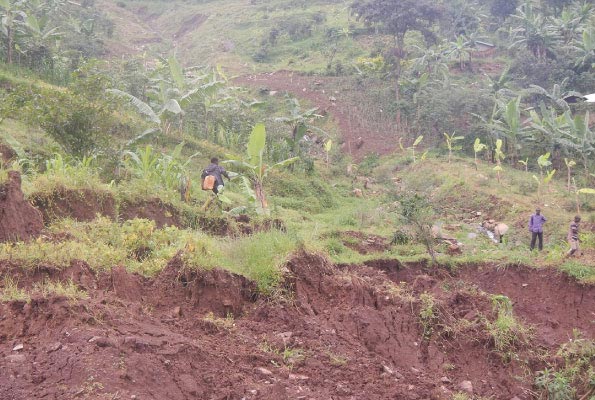The government of Uganda through the Ministry of Agriculture Animal Industry and Fisheries (MAAIF) has launched the National Adaptation Plan for the Agricultural Sector (NAP-Ag) aimed at integrating climate change concerns related to agriculture-based livelihoods within the existing national planning and budgetary processes.
The plan was launched in Kampala on Wednesday by Vincent Ssempijja, the minister of AAIF.
The formulation of the NAP-Ag was funded by German Federal Ministry of the Environment, Nature Conservation and Nuclear Safety (BMU) through its project on Supporting Developing Countries to Integrate Agricultural Sectors into National Adaptation Plans (NAP-Ag).
Ssempijja said the process has enabled Uganda to identify medium and long-term adaptation needs and develop Implementation strategies and interventions. The NAP-Ag presents 21 priority adaptation options in the key areas of Crop Production, Livestock Production, Fisheries Management, Climate Information, Early Warning and Disaster Preparedness, Forestry, Land and Natural Resources Management, Research, and Knowledge Management.
“The framework is a basis to mitigate climate change issues, farmers can’t achieve any goal without planning. Recently in 2016, change in climate led to a long dry spell that culminated into the fall of army warm and food insecurity, we need to plan for any in coincidence,” he said.
He said the framework ‘peddles the promotion and encouraging highly adaptive and productive livestock breeds, promote technologies for improved livestock feeds and sustainable management of rangelands and pastures through integrated management.’
The minister said the plan would help in adopting measures that focus on boosting productivity of both cash and food crops, building capacity of small holder farmers to increase yields and better understanding the impact of temperature rise and rain rainfall.
He said NAP-Ag contributes to achievement of Uganda’s National Determined Contributions (NDC) to Climate Change, contributes to the achievement of Sustainable Development Goals (SDGs) and is aligned to the Second National Development Plan (NDP II).
Formulation of NAP-Ag policy was flagged off by the state minister for agriculture Cristopher Kibanzanga on June 25, 2016.
Climate changes affects Uganda’s crop production, livestock as well as fisheries in many ways.
For instance, the Uganda Vulnerability Assessment study on crops most widely grown in all agro-ecological zones showed that many crops grown in the country are vulnerable to the rising temperatures, increasing dry season and unrealizable rainfall. Uganda grows crops such as coffee, maize, beans, millet, sorghum, sweet potatoes, Cow peace, soy beans and rice among others.
Crop production contributes about 12.4 percent of GDP, according to 2014 statistics provided by the Uganda Bureau of Statistics (Ubos). The subsector supports smallholder farmers, provides food and nutritional security and delivers foreign exchange earnings.
However, the ministry of Finance in 2015 reported that productivity growth in the country has been on a downward trend; averaging only around 1 percent per year over the last decade, as compared to around 6 percent per year in better-performing countries in the region. Crop productivity is the quantitative measure of crop yield in given measured area of field, experts say.
The increase in agricultural production in Uganda is attributed to farming area expansion rather than increase in productivity.





